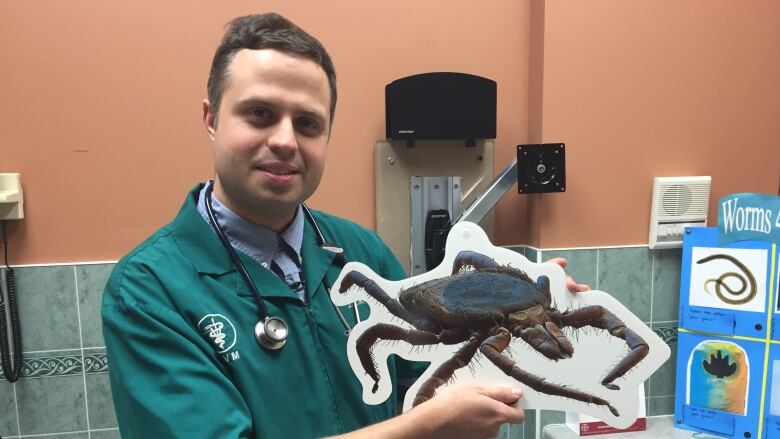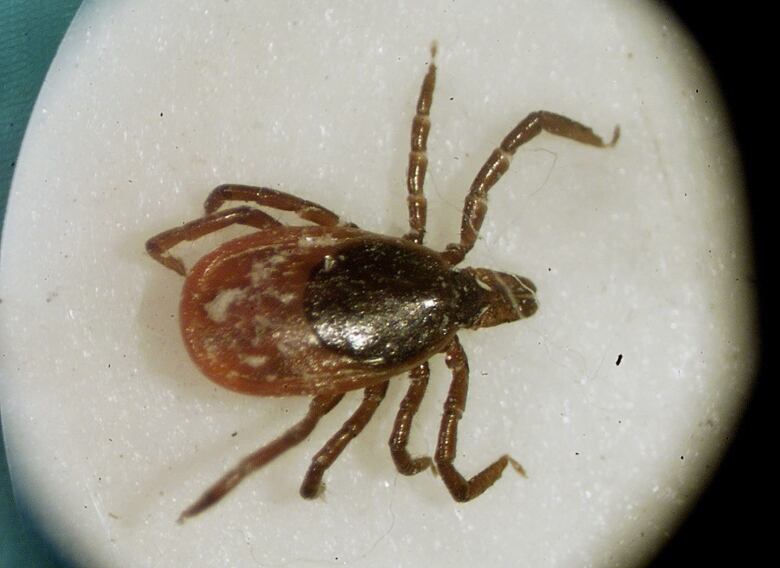Ticks emerge early in Ottawa region
'To already be pulling ticks off in early April is just incredible,' vet says

Pet owners and outdoorenthusiasts beware: Ticks are emerging earlier than normal in the national capital region this spring.
At the Algonquin Animal Hospital in Nepean,Dr. Kevin McIntosh has been busy since early this month treating dogs for ticks and lyme disease.
"To already be pulling ticks off in early April is just incredible," the veterinarian said."I see this being an incredibly active year for ticks, especially because we've seen so much already of the lyme that we're diagnosing by our blood tests."
The tiny arachnids are often found in tall grass near wooded areas, and can carry lyme disease, which can cause facial palsy, liver damageand other health problems in humans. The disease is more treatable in dogs, which often don't show the same symptoms, according to McIntosh.
'Climate change is a big factor'
Although there's no national or provincial tick monitoring system, there's been an increase of tickactivity in eastern Ontario in recent years, mostly due to favourable weather conditions, says scientist Wayne Knee.
"Climate change is a big factor," said Knee, who's with theCanadian National Collection of Insects, Arachnids and Nematodes at Agriculture Canada."Increasing winter temperatures increases the survivorship of ticks, and warmer, earlier springs, so ticks get a chance to survive."

"Ticks don't care about geographic borders," Knee said. He recommends using insect repellent with DEET when going outdoors, and tucking in clothes tightly to avoid letting ticks catch a ride.
Check thoroughly for ticks
"Often lyme disease ends up being the greatest concern," Knee added."But in reality every species of ticks transmits some sort of pathogenic organism. So there's many types of infections that you can get from many different kinds of ticks, so you definitely don't want them feeding on you for a prolonged period of time."
McIntosh worries the window for tick activityis getting longer. He pulled a tick from a dog last December, which is the latest he's ever seen one.
With spring now in full swing, the veterinarian advises dog owners to thoroughly check their pets for ticks when coming back indoors.
"Any dog that has been in the long grass, you just want to give them a good tip to tail pat-down, checking under the armpits, checking the tail, checking the head, just to make sure that ticks are not crawling around or already attached."
McIntosh said if you find a tick, you have a couple of choices.
"Your best weapons are a pair of tweezers and knowledge. From there you can either contact your veterinarian, and we can guide you through it, or you can bring [your pet] in, and we'd be happy to take them off for you."













_(720p).jpg)


 OFFICIAL HD MUSIC VIDEO.jpg)
.jpg)



























































































